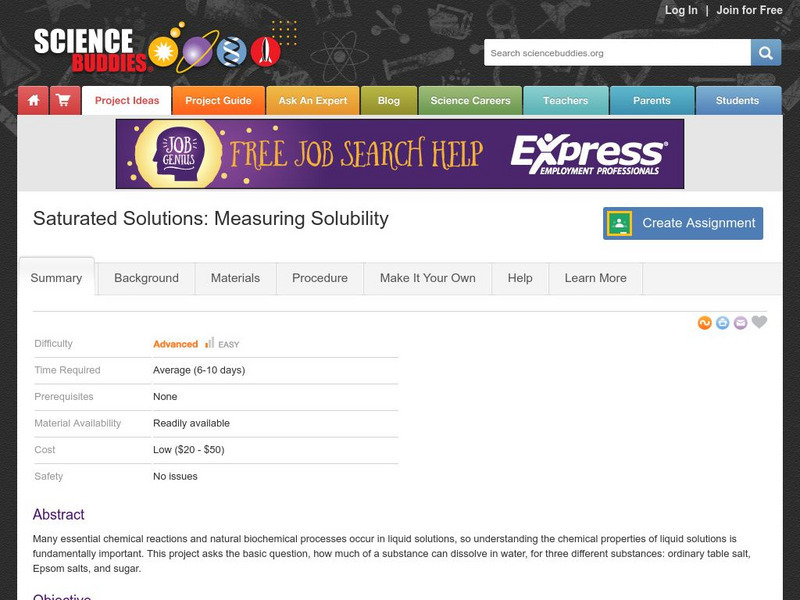Curated OER
DNA: What Does It Mean?
Tenth graders explore DNA using online tutorial. They perform their own DNA extraction from a clove of garlic and identify the key components of DNA.
Curated OER
How to identify a physical change from a chemical change
Learners identify the difference between some physical and chemical properties and compare some physical and chemical changes. They design an experiment to distinguish between a physical or a chemical property of their choice.
Curated OER
Yellow Pod
Students use appropriate skills to design and conduct scientific investigation. They sort and classify various ingredients and analyze their investigation. Finally, students describe the observable states of matter, bot solids and liquids.
Curated OER
Milk and Dairy Test
Students explore how to select and prepare milk and milk products, identify standard serving size for milk and milk products, review terms associated with milk and milk products, and demonstrate knowledge of how to use and care for these...
American Chemical Society
Middle School Chemistry: Lesson Plans: Why Does Water Dissolve Sugar?
Lesson plan in which students design an experiment to determine if different types of liquids affect the amount of dissolution of an M&M candy shell.
American Chemical Society
Inquiry in Action: M&m's in Different Sugar Solutions
An activity to investigate the factors that affect the rate of a substance dissolving. In this activity, students see if the rate of dissolving of the M&M coat is changed by the amount of sugar already dissolved in water. This...
American Chemical Society
Inquiry in Action: Dissolving a Substance in Different Liquids
This activity investigates the question of whether colored sugar dissolves at the same rate in water, vegetable oil, and alcohol. This lesson includes teacher information and student activity sheet.
University of Colorado
University of Colorado: Ph Et Interactive Simulations: Sugar and Salt Solutions
What happens when sugar and salt are added to water? Pour in sugar, shake in salt, and evaporate water to see the effects on concentration and conductivity. Zoom in to see how different sugar and salt compounds dissolve. Zoom in again to...
American Chemical Society
Middle School Chemistry: Does Temperature Affect Dissolving?
Investigate the difference between the solubility of salt and sugar in hot and cold water.
Science Buddies
Science Buddies: Saturated Solutions: Measuring Solubility
Many essential chemical reactions and natural biochemical processes occur in liquid solutions, so understanding the chemical properties of liquid solutions is fundamentally important. This project will challenge you to discover how much...
Science Buddies
Science Buddies: What's the Point of Boiling?
You know that water can exist in three separate phases: solid (ice), liquid (water), and vapor (steam). To change from one phase to another, you simply add (or remove) heat. When water boils, what happens to molecules (for example sugar...
Other
Science Alive: Pure Substances, Mixtures, and Separations
One way scientists talk about matter or substance-that is, the stuff in the world-is in terms of pure substances and mixtures. Pure substances are substances that contain only one kind of molecule. Water with nothing else in it is a pure...











